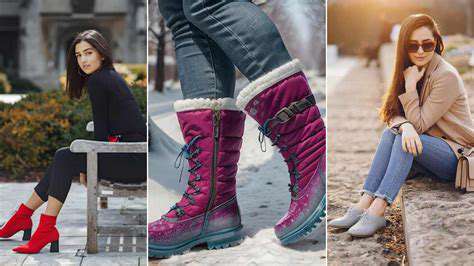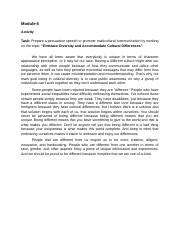Best Hiking Gear for Cold Weather

Understanding the Importance of Layering
Layering in clothing is a fundamental principle of thermoregulation, enabling you to adapt to fluctuating temperatures. It allows for precise control over your body heat, preventing overheating in warm conditions and providing insulation against the cold in cooler or colder weather. Mastering effective layering techniques is absolutely vital for maintaining comfort and avoiding discomfort. Proper layering systems are essential, whether you're hiking in the mountains, commuting to work, or simply enjoying an outdoor activity.
By strategically adding or removing layers, you can maintain a comfortable internal temperature, optimizing performance and reducing the risk of hypothermia or overheating. This adaptability proves invaluable when facing diverse weather conditions.
Base Layers: The Foundation of Your Outfit
Base layers are the first line of defense against your skin. These garments play a critical role in moisture management, keeping you dry while regulating body temperature. They should be constructed from breathable, moisture-wicking materials like merino wool or specialized synthetic fabrics. Neglecting proper base layers can lead to significant discomfort and impaired performance in cold environments.
Selecting the appropriate base layer material depends on both the activity and expected temperature range. For instance, a lightweight, moisture-wicking base layer works best in warm weather, while a heavier, insulating version becomes necessary for extreme cold.
Mid-Layers: Adding Insulation and Warmth
Mid-layers serve as insulation, creating a thermal buffer between your base layer and outer shell. Their thickness and material vary significantly based on activity and anticipated temperatures. Excellent mid-layer options include fleece jackets, lightweight down vests, or insulating sweaters. These layers function by trapping warm air, providing additional protection against cold conditions.
Choosing the right mid-layer is paramount for effective temperature regulation. Always consider both the expected temperature range and activity intensity when selecting this crucial component.
Outer Layers: Protecting Against the Elements
Outer layers serve as your primary shield against environmental factors, offering protection from wind, rain, and snow. They should feature waterproof and windproof construction, ideally with adjustable cuffs and hoods. High-quality outer layers are indispensable for protection against harsh elements, even in extreme conditions. Waterproof yet breathable fabrics are essential for maintaining comfort while preventing moisture accumulation.
Choosing the Right Materials for Each Layer
Different materials serve distinct purposes across layers. Base layers require moisture-wicking fabrics, mid-layers need insulating properties, while outer layers demand waterproof and windproof characteristics. Comprehending material properties is fundamental when selecting layers for specific activities or weather conditions. Various fabrics respond differently to moisture and temperature, necessitating careful evaluation.
Always assess the specific conditions you'll encounter. Are you trekking through snowy mountains? Cycling in light rain? The right material selection dramatically impacts both comfort and performance.
Putting It All Together: Creating a Thermal Layering System
Effectively combining these layers forms a comprehensive thermal system. Begin with a moisture-wicking base layer, add an insulating mid-layer, and complete with a protective outer shell. This strategic approach enables dynamic adjustment as temperatures fluctuate. You can effortlessly add or remove layers to maintain optimal body temperature. This flexibility proves essential for staying warm and dry across diverse conditions.
Always consider both the activity and anticipated weather conditions. A well-designed layering system is absolutely critical for achieving peak comfort and performance.

Insulation and Protection: Keeping Warm in Harsh Conditions
Understanding Insulation
Insulation is absolutely critical for hiking in cold or extreme weather conditions. It functions by trapping body heat, preventing its escape. Effective insulation maintains core body temperature, particularly during prolonged exposure to freezing temperatures or high altitudes. Understanding various insulation materials - down, synthetic, or fleece - proves essential when selecting gear for specific needs.
Importance of Protection from the Elements
Elemental protection is equally crucial for warmth and comfort during hikes. This extends beyond insulation to include waterproof and windproof layers that shield against rain, snow, and wind chill. Proper protection prevents moisture penetration, which could lead to hypothermia - a serious risk in cold environments. Selecting adjustable, removable layers based on weather conditions is absolutely essential.
Choosing the Right Insulation Materials
Different insulation materials possess unique properties suited to various situations. Down offers exceptional warmth-to-weight ratio but loses effectiveness when wet. Synthetic insulation provides more consistent warmth across diverse conditions while resisting moisture. Understanding the balance between weight, warmth, and moisture resistance is critical when selecting hiking insulation.
Layering for Optimal Temperature Regulation
Strategic layering represents the best approach for maintaining ideal body temperature during hikes. Base layers manage moisture, mid-layers provide insulation, while outer layers offer environmental protection. Adjusting layers according to changing conditions ensures consistent warmth and dryness. A properly layered system far outperforms any single, bulky garment.
Waterproof and Windproof Outerwear
Waterproof and windproof outer layers are indispensable for staying dry and warm in inclement weather. These garments prevent moisture penetration, helping maintain body temperature. Look for breathable materials to avoid overheating. Features like taped seams and waterproof zippers ensure comprehensive protection against the elements.
Choosing Footwear for Insulation and Protection
Hiking boots play a pivotal role in both insulation and protection. They must provide warmth while safeguarding against terrain hazards. Consider features like waterproof membranes, insulated linings, and rugged soles offering superior traction. Proper footwear proves equally important as clothing for maintaining comfort and preventing injuries.
Importance of Accessories for Additional Protection
Accessories like hats, gloves, and scarves significantly enhance insulation and protection. Often overlooked, these items substantially impact warmth in harsh conditions. Selecting warm, waterproof accessories prevents heat loss from exposed areas. A complete set of accessories dramatically improves overall comfort and safety during hikes.
Essential Accessories for a Safe and Comfortable Hike
Navigation Tools
Reliable navigation is absolutely essential for any hike, particularly in unfamiliar terrain. Traditional tools like maps and compasses remain vital for orientation, especially during unexpected weather changes or obstacles. Waterproof map cases protect paper maps from elements, ensuring usability in all conditions. Proficiency with these tools significantly enhances both safety and enjoyment while preventing disorientation.
Digital tools like GPS devices or smartphone apps offer additional convenience for tech-savvy hikers. However, remember these devices depend on battery power, making backup methods essential. A quality compass and detailed map provide unmatched confidence, particularly in remote areas without cellular service.
Insulating Layers
Staying warm during cold hikes demands strategic clothing layers. Moisture-wicking base layers maintain dryness and comfort by pulling sweat away from skin. Wool or synthetic fabrics make excellent base layer choices, while fleece jackets or sweaters serve as effective mid-layers. Waterproof, windproof outer shells are absolutely essential for maintaining safe body temperatures throughout your hike.
Consider packing a lightweight down jacket for additional warmth when temperatures drop significantly. Remember, layering allows continuous adjustment to changing conditions - a crucial factor in preventing hypothermia and maintaining comfort.
Footwear and Protection
Proper hiking boots are fundamental for comfortable, safe excursions. Seek models with excellent ankle support and durable soles to protect against uneven terrain. Well-broken-in boots prevent blisters and discomfort. Pair them with moisture-wicking socks (merino wool or similar) to keep feet dry and blister-free.
Waterproof gaiters offer additional protection for ankles and lower legs against elements and debris. These often-overlooked accessories can make a substantial difference in wet or snowy conditions.
Illumination and Safety Gear
Reliable lighting (headlamps or flashlights) is essential for low-light navigation, particularly during dawn/dusk hikes or unexpected delays. Bright headlamps ensure personal visibility while making you more visible to others in emergencies. Always carry a fully charged headlamp for cold-weather hikes.
Safety whistles and personal locator beacons (PLBs) represent critical emergency equipment. Whistles can signal for help, while PLBs enable rescuers to pinpoint your location if lost or injured. These items provide invaluable peace of mind despite seeming unnecessary initially.
First-Aid Kit
A comprehensive first-aid kit addresses minor injuries and ailments during hikes. Essential supplies include bandages, antiseptic wipes, pain relievers, blister treatment, and personal medications. Properly stocking your first-aid kit ensures comfort and addresses potential health issues during your adventure.
Equally important is knowing how to use first-aid items effectively. Basic first-aid knowledge transforms minor injuries from potential major problems into manageable situations.
Water Bottles and Hydration Packs
Maintaining hydration is crucial for all hikes, especially in cold conditions. Carry sufficient water or use hydration packs to ensure continuous access. Dehydration significantly impacts physical performance and wellbeing, potentially causing fatigue and serious health issues. Drink regularly, even without thirst signals.
Cold weather accelerates dehydration - account for this when planning water intake. Hydration packs conveniently carry larger water volumes without requiring multiple bottles.
Emergency Shelter
Compact, waterproof emergency shelters (tarps or bivy sacks) can prove lifesaving during unexpected weather changes. They provide critical protection against elements, preventing hypothermia and other cold-weather injuries. Including emergency shelter in your gear is absolutely essential for maintaining safety during hikes.
In cold conditions, emergency shelters become paramount. They often represent the difference between a safe excursion and a potentially life-threatening situation. Never overlook this crucial item when packing for hikes.





![Exploring the Temples of Southeast Asia [Cultural Guide]](/static/images/27/2025-05/Myanmar27sGoldenPagodas3AASymphonyofSpirituality.jpg)




